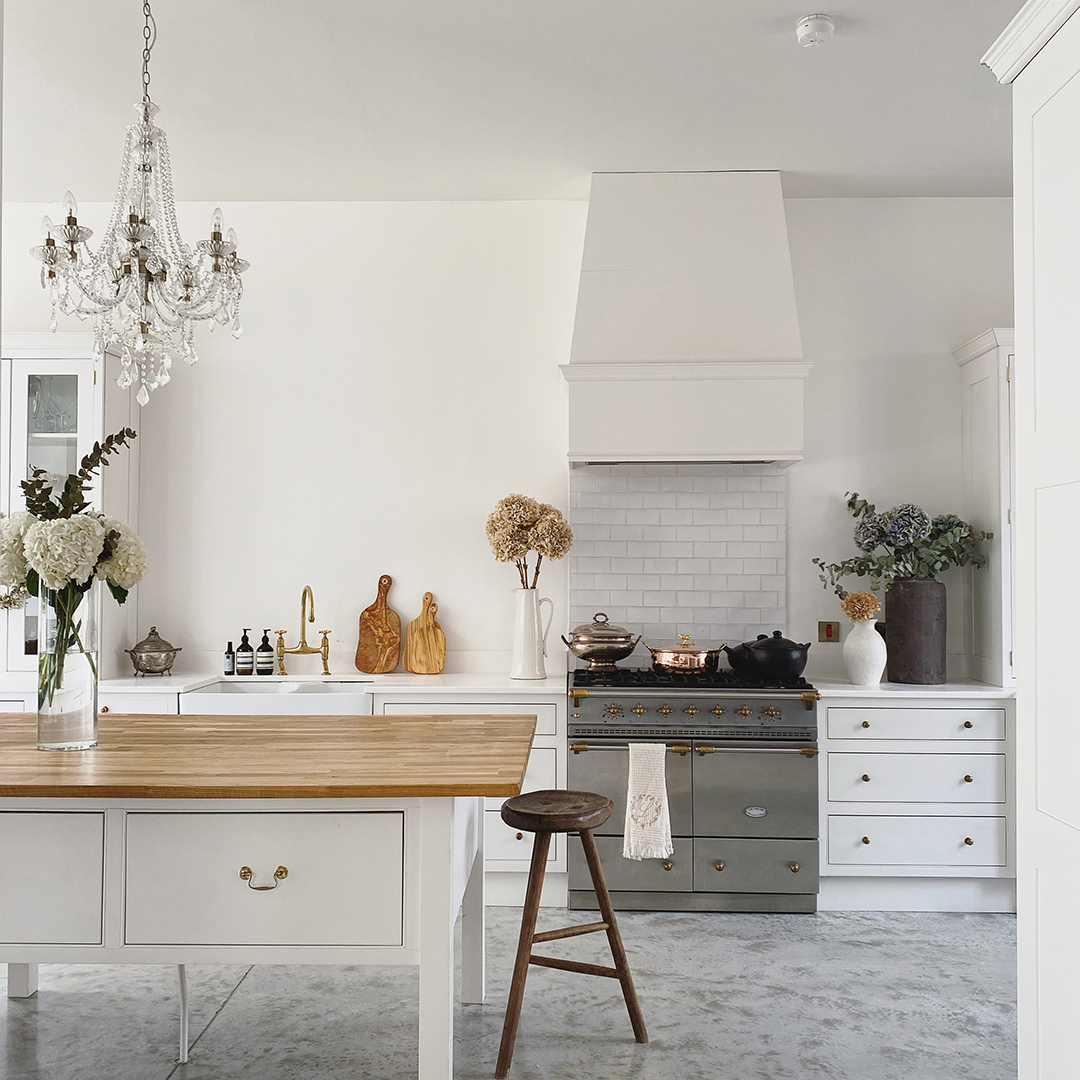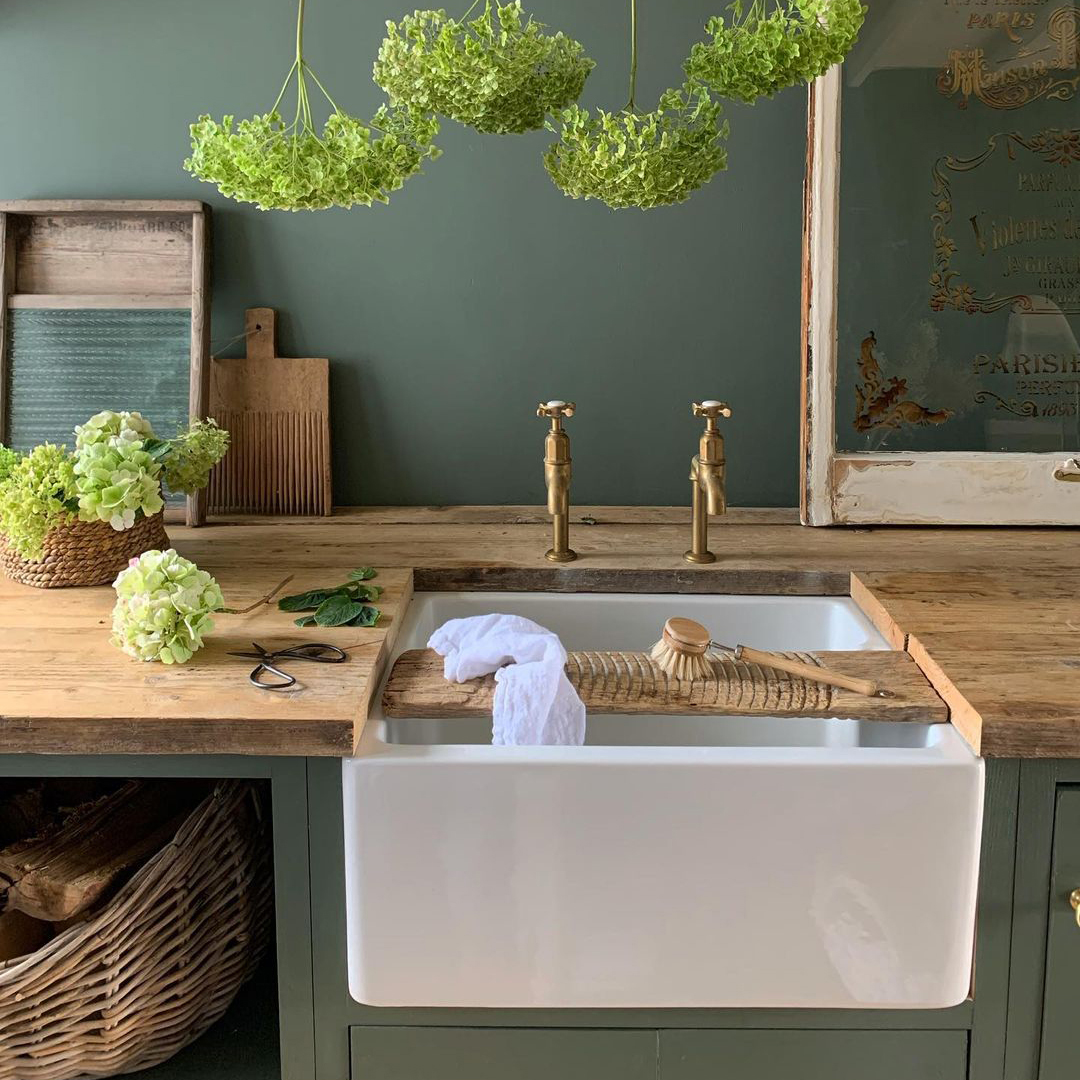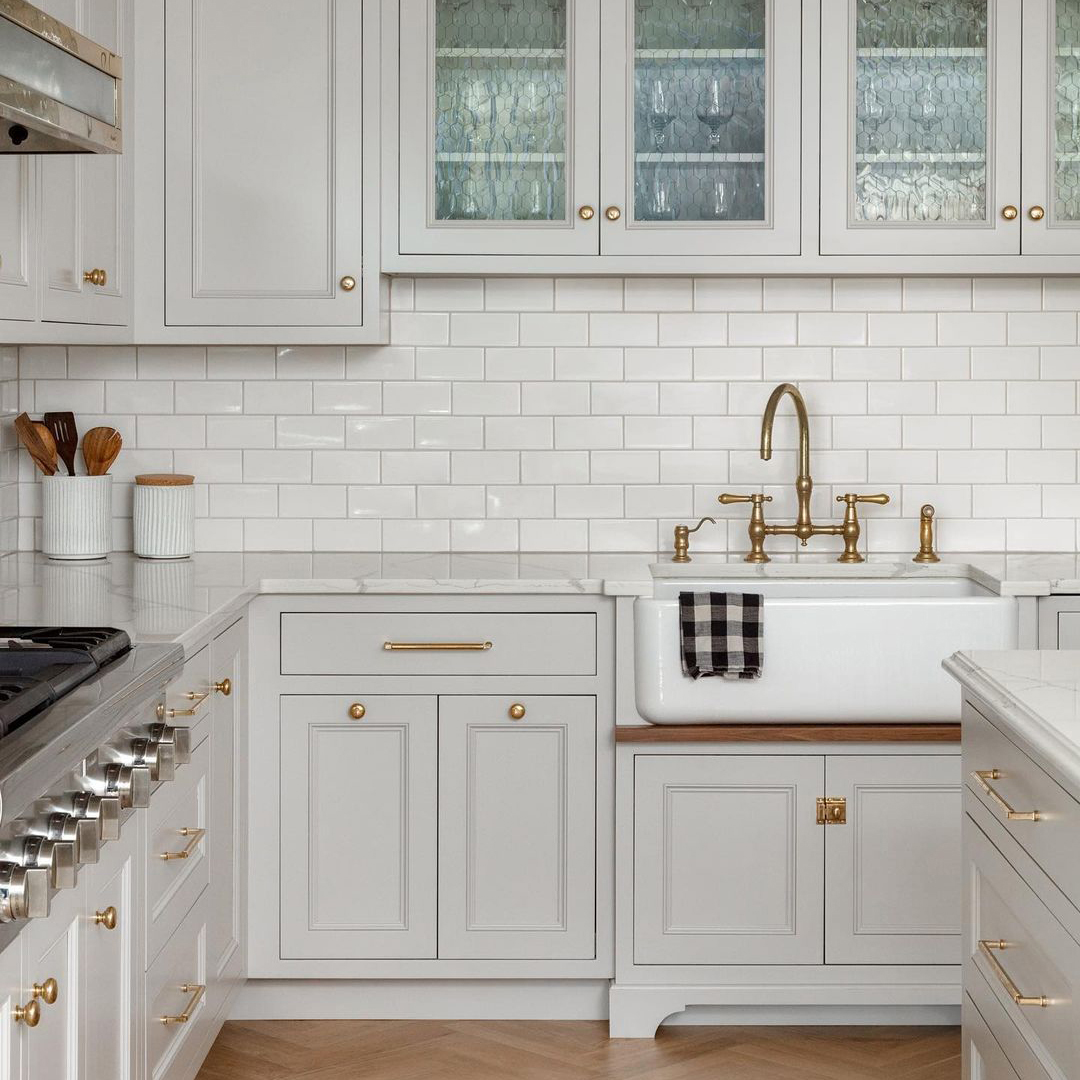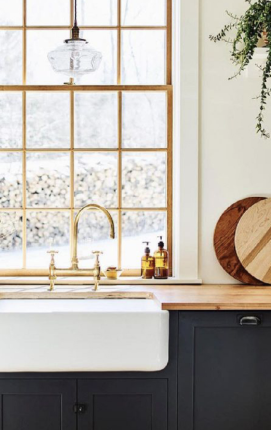The Scullery.
The Victorian kitchen was often supported by a ‘scullery’, which, like the Victorian kitchen, has undergone a resurrection in the form of the utility room. This adjoining space often featured a sink or sometimes two. In fact, before 1900 very few kitchens would use the sinks for washing dishes, vegetables and clothes because most tasks involving water were performed in the scullery. The Victorians did not typically store food in the kitchen because the warmth from the range meant food deteriorated too quickly without refrigeration. Larders were placed in the cooler environment of the scullery.
Clean Design.
Hygiene was an important aspect of Victorian kitchen design, and all surfaces were designed to be easy to clean and maintain. One of the reasons our sinks became popular is the hygienic anti-bacterial qualities of the hard-wearing glaze applied to every Shaws sink. Current tests show that this reduces bacterial colonies of E-Coli and MRSA by 99.99%. It also meant that once glazed, our heavy fireclay sinks were much more resilient against chipping from the heavy cast-iron pots and pans, and more resistant to staining in the absence of modern cleaning products. Roomier Victorian kitchens would often feature a large central table, which set the stage for the kitchen island, popular in so many kitchens today. This essential large work surface was used to prepare meals and perform other messy tasks before being scrubbed clean with sand, soda and water.
Functional Finishes.
The Victorians took an extremely functional approach to the flooring in their kitchens, leaving the dark wooden floorboards exposed. However, a notable design feature of the Victorian kitchen is the tiled area beneath the central table. This was a practical solution that allowed the floor to be swept and mopped easily, to remove any scraps and remnants left behind from the food preparation, and to maintain good hygiene.
Wallcoverings were selected for their practicality over their aesthetic qualities. Again, with hygiene front and centre, the lower half of the walls were often covered with glazed brick tiles, popular in many Victorian-era public buildings. These glazed brick tiles were the origin of our business - the first products to come out of the kilns in Darwen in 1897. Another common approach was vertical, wooden tongue and groove panelling, creating a warmer, more textural look, especially when painted in bold Victorian-coloured, wipeable gloss.
Be bold with Colour.
The one aspect of kitchens from this era that goes way beyond practical and pragmatic is colour. The Victorians loved bold colour combinations and strong hues. An ordinary period kitchen can easily be turned into an eye-catching, on-trend space, by taking a bold approach with colour. Dusky pink cabinetry and bottle-green glazed tiles are period correct but also very ‘of-the-moment‘. Bright reds and yellows were common and can look very contemporary when applied to cabinetry, offering a brighter alternative to the ubiquitous Anthracite Grey and Dark Blue that tends to offer safer off-the-shelf shades. Being brave and indulging yourself can result in a really spectacular end result.





